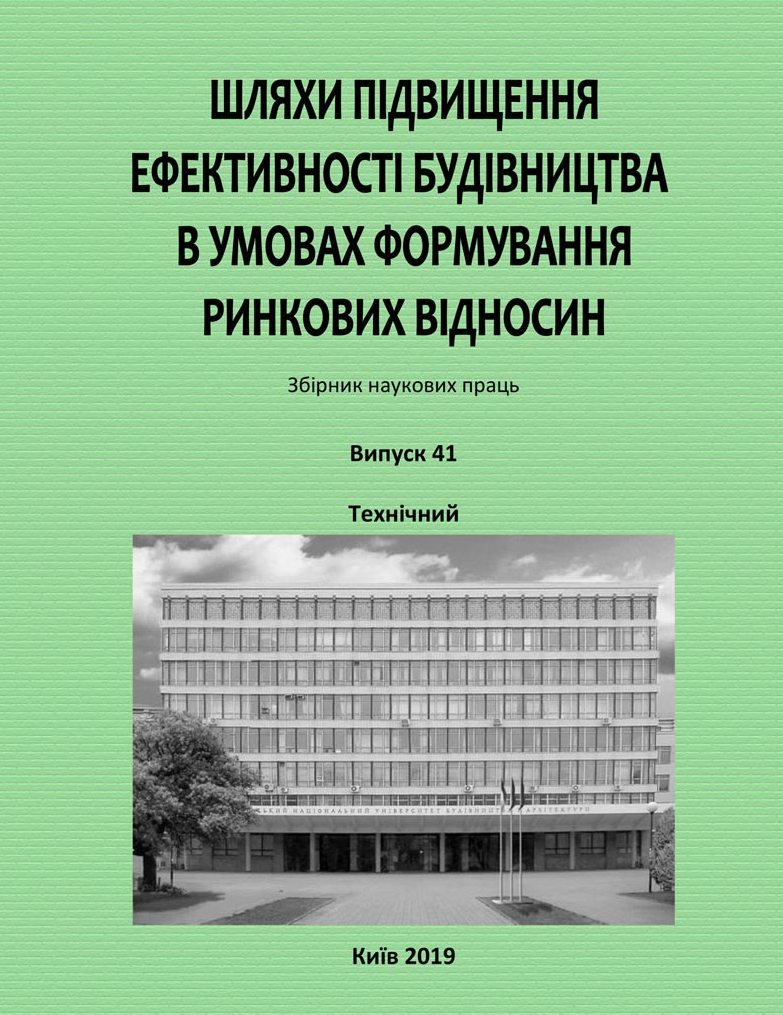Advanced resource-saving copper wastewater treatment by ferritization
DOI:
https://doi.org/10.32347/2707-501x.2019.41.148-162Keywords:
wastewater, treatment, cooper, ferritisation, sludge utilizationAbstract
The results of studies of the treatment of copper-containing wastewater by ferritization are presented. This method allows you to improve the properties of the precipitate formed in the process of water purification, in difference to the precipitate obtained after using the reagent method. In addition, the ferritic method increases the efficiency of purification of copper-containing wastewater.
The formation of ferromagnetic compounds of copper and iron is investigated. Much attention was paid to changing the following parameters that determine the ferritization process: reaction temperature, pH value, Cu2+: Fe2+ ratio, and solution aeration. The study of the physicochemical properties of the precipitate formed during ferritization is the basis for the development of this method. Another important feature was the study of the effect of aging up to twenty days on the properties of sediment.
To provide a clear overview of the experiments and the corresponding parameters used, they were divided into so-called time series - Time Series Experiments.
The following parameters were constant during various time series experiments:
- Cu2+ solution concentration: 10 g/dm3
- air supply during the ferrite process: 4 l/min
- ratio of Cu2+ : Fe2+- 1: 2.7.
The study of the precipitate properties was performed using electron microscopy using high resolution scanning microscopy (HRSEM) and measurements using transmission electron microscopy (TEM).
Atomic absorption spectroscopy was used to determine the residual concentration of copper in the solution after the ferrite process and subsequent filtering of the precipitate. Performed atomic absorption spectroscopy showed that the cleaning effect when using this method is more than 99.9%. The water purified from copper compounds is returned to the closed cycle of the manufactory, thereby reducing the cost of production, and the resulting copper ferrite can be used as a commercial product or as a reagent for the treatment of industrial wastewater.
In the course of the research, the optimal ferritization temperatures, the ratio of copper and iron concentrations, the influence of the pH of the solution and the aging time of the precipitate on its qualitative integral indicators were determined.
References
Kochetov G, Zorya D. (2010). Fiziko-ximischeskie osnovi ochistki rastvorov ot medi zementatsiey I ferritizatsiey. Materiali megdunarodnogo vodnogo foruma EKVATEK. 2010, pp. 45–49.
Kochetov G, Zorya D, Grinenko. Integrated treatment of rising copper containing wasterwater/ Civil and Environmental Engineering . Vol. n. 4 , pp. 301–305.
Zorya O.V., Ternovtsev O.V., Zorya D.I. (2019). Resursooshadna texnologiya ochistki stschnix vod vid nikelu. Shliakhy pidvyschennia efektyvnosti budivnytstva v umovakh formuvannia rynkovykh vidnosyn, 39, 122-130.
Tygay, A.M., Kochetov, G.M., Samchenko, D.M. (2012). Vivchennya stiykocti vidxodiv ochishennya stichnix vod yaki mistyat spoluki midi. Problemi vodopostachfnnya, vodovidvedennya ta gidravliki. Vip.20, pp.66–70.
Mandaokar, S.S., Dharmadhikari, D.M., and Dara, S.S. (1994). Retrieval of heavy metal ions from solution via ferritisation. Environmental Pollution. 83(3): p. 277–282.
BfG and Umweltbundesamt, Bericht des Bundesministeriums für Gesundheit und des Umweltbundesamtes an die Verbraucherinnen und Verbraucherüber die Qualität von Wasser für den menschlichen Gebrauch (Trinkwasser) in Deutschland. 2011: Bonn/Dessau-Roßlau.
Brink, P., Bassi, S., and Vergnon, M.(2008). Benefits of Environment in ENP Countries. Methodology test case: Ukraine in Working Document for DGENV of the European Communities.
West, A.R., Solid state chemistry and its applications. 1984, Chichester: Wiley. vii, 734 p.
Goldstein, J., Scanning Electron Microscopy and X-ray microanalysis. 2003, Springer: New York. p. 690.
Hausner, D.B., et al., Ferrihydrite reactivity toward carbon dioxide. Journal of Colloid and Interface Science, 2009. 337(2): p. 492–500.
Leng, Y., Materials characterization: introduction to microscopic and spectroscopic methods. 2008, Hoboken, N.J. ; Chichester: Wiley. xii, 337 p.
Downloads
How to Cite
Issue
Section
License
Copyright (c) 2020 O. Zoria, O. Ternovtsev, D. Zoria, M. Walery

This work is licensed under a Creative Commons Attribution 4.0 International License.
Authors who publish with this journal agree to the following terms:
- Authors retain copyright and grant the journal right of first publication with the work simultaneously licensed under a Creative Commons Attribution License that allows others to share the work with an acknowledgement of the work's authorship and initial publication in this journal.
- Authors are able to enter into separate, additional contractual arrangements for the non-exclusive distribution of the journal's published version of the work (e.g., post it to an institutional repository or publish it in a book), with an acknowledgement of its initial publication in this journal.
- Authors are permitted and encouraged to post their work online (e.g., in institutional repositories or on their website) prior to and during the submission process, as it can lead to productive exchanges, as well as earlier and greater citation of published work (See The Effect of Open Access).

